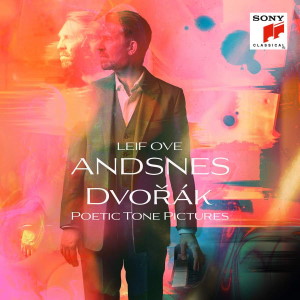
Antonín Dvořák (1841-1904)
Poetic Tone Pictures, Op.85 (1889)
Leif Ove Andsnes (piano)
rec. 2021, Olavshallen, Trondheim, Norway
SONY 19439912092 [56]
There have been a number of recordings of Dvořák’s Poetic Tone Pictures but it has never become a repertoire staple, not least because it’s a thirteen-movement cycle lasting not far short of an hour. Leif Ove Andsnes discovered it when he came across Radoslav Kvapil’s recording of 1992, still available on Regis RRC1171, but even before that he had been drawn to the Czech piano tradition through his teacher at the Bergen Conservatory, Jíři Hlinka. So, he’s unusually well-placed to offer a new slant on music that has largely been in the hands of Czech or Slavic pianists.
His touch is crisp and his playing energising, but it sounds to me slightly too close to the microphone and as a result one can hear faint sounds of his pedalling. Certainly, his finger clarity reveals his dextrous pianism, and his tempi vary from the conventional to the decidedly brisk. One of the most striking pieces in the cycle is the third panel, In the Old Castle, where Andsnes clearly relishes those little crunchy dissonances and the rich but subtle coloration that saturates the music. The cycle encompasses the scenic and the salon, into the last of which categories falls No.4, a rich, verdant Spring Song.
By an established seeming-consensus the next piece, the Peasant’s Ballad takes around 3:40 to 3:55 but Andsnes is even quicker, rattling though it in 3:10. The difference doesn’t sound much but in a small piece such as this, it makes a conceptual difference, and I happen not to feel that the light reflective elements quite coalesce. Additionally, here there’s a tonal hardness to the piano sound. Dvořák’s lodestars in this work are a predictable bunch, from Grieg to Tchaikovsky, but there are certainly signs of maturity and individuality. They may not be original but the musical box sonorities in the B section of No.8, the Goblins’ Dance, an otherwise Griegian effusion, are most effective. Andsnes shapes the cantabile elements of the Serenade with distinction. The clear highlight as the work develops is the penultimate panel, At A Hero’s Grave, played with gravity, nobility and resonance; sombre and dramatic. The gentle dissolving sonorities of the final scene, On the Holy Mountain, are pellucidly done though there is certainly a place for Kvapil’s far more incisive tempo.
Some alternative choices are marooned in boxes, which might make decisions easier if you don’t want to acquire swathes of Dvořák’s solo piano music. Kvapil remains a strong recommendation and Inna Poroshina in a Brilliant box and Stefan Veselka on Naxos are also persuasive: I refer in some detail to Veselka’s set in my Poroshina review.
There was room for the Theme and Variations – Kvapil’s own choice – in this 56-minute disc but Andsnes’ playing is invariably attractive, though some worries about the recording persist.
Jonathan Woolf
Help us financially by purchasing from





















